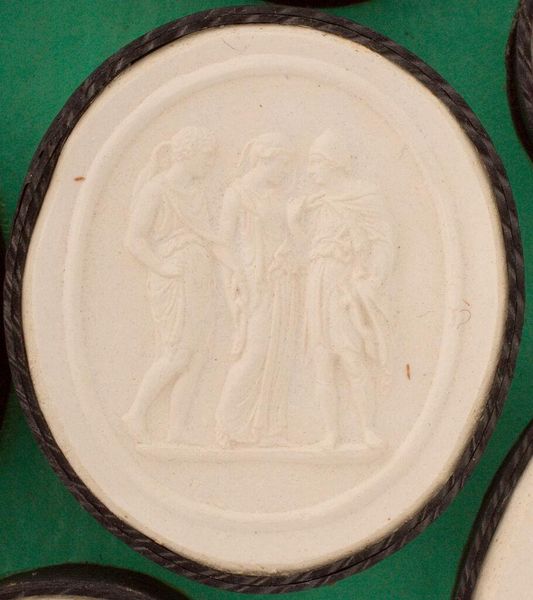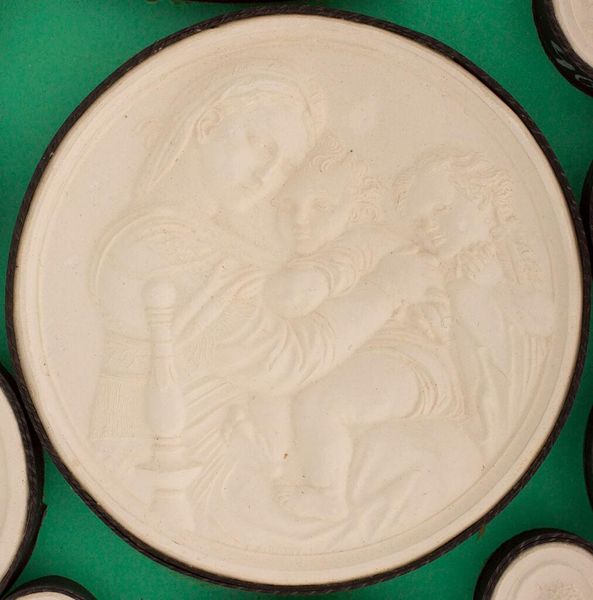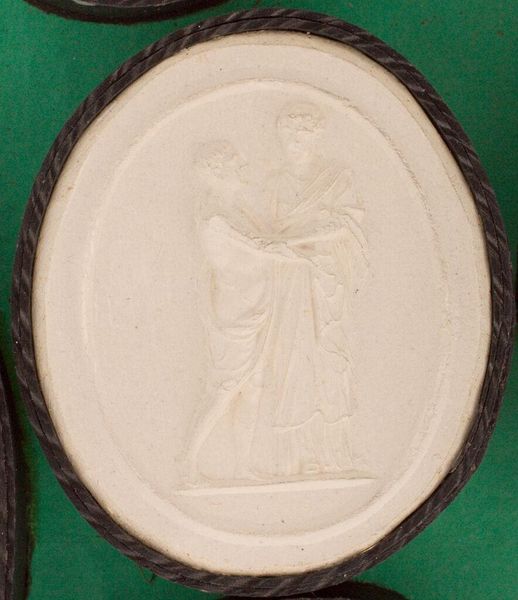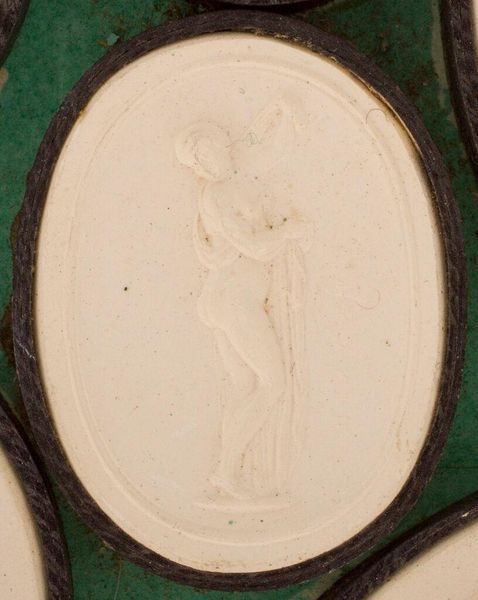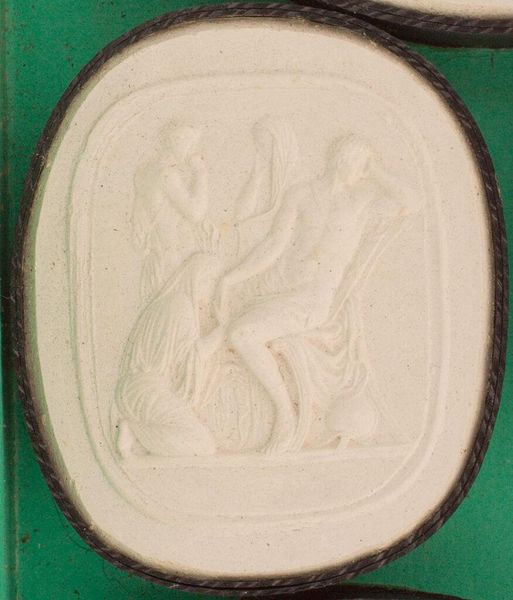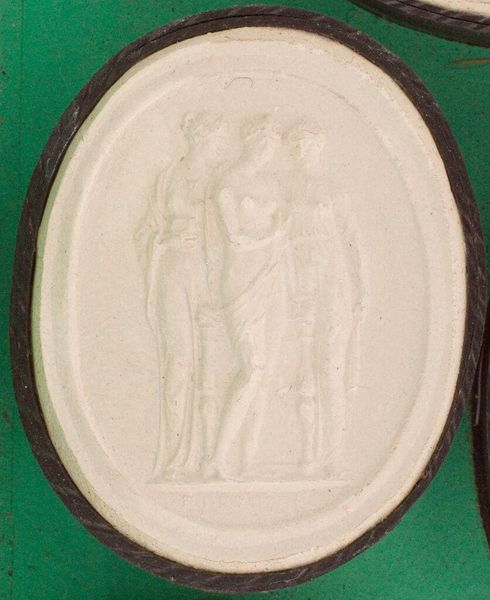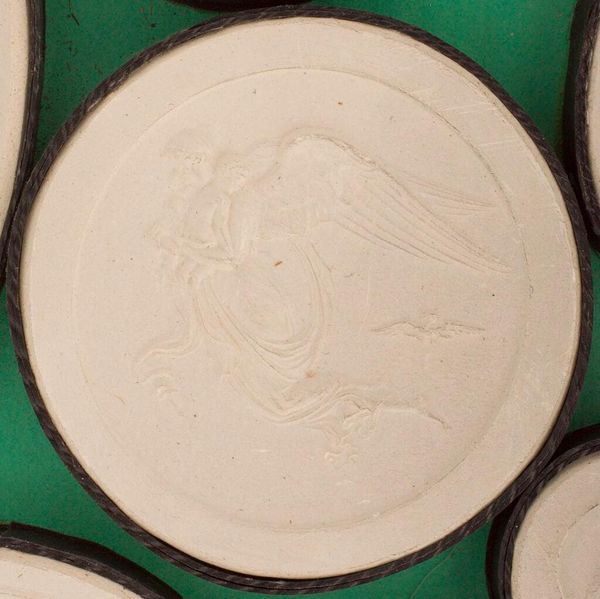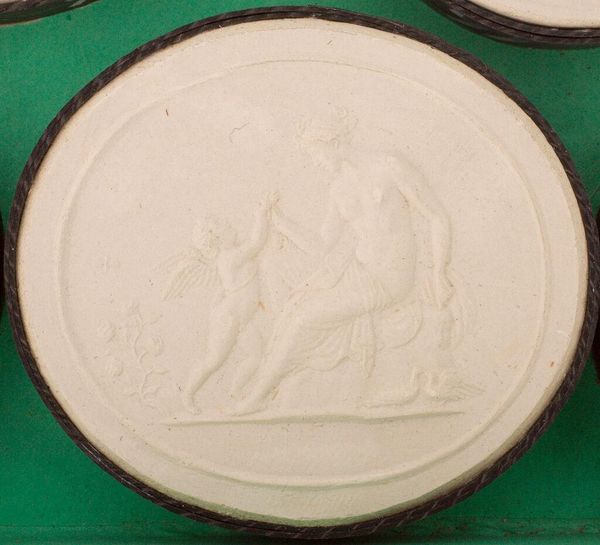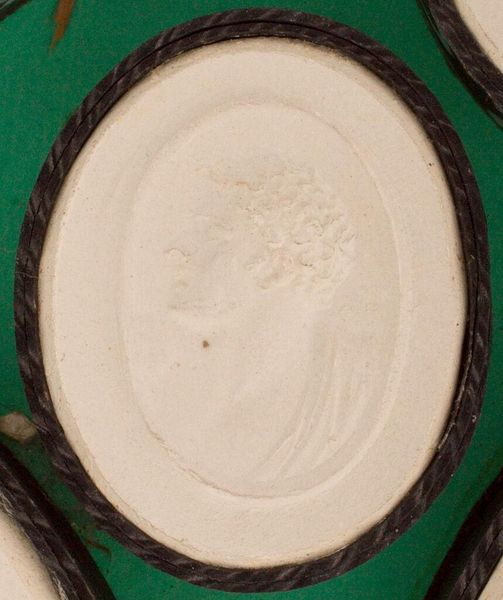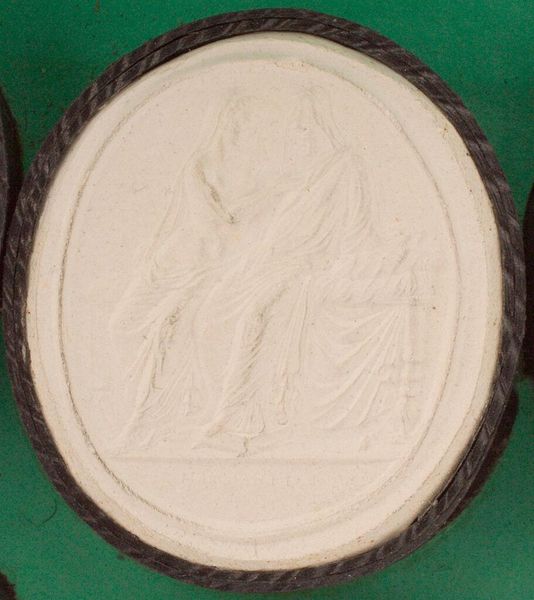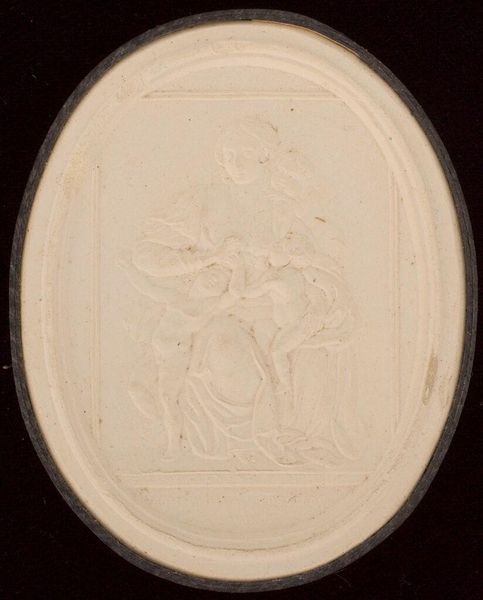
Hermes, Eurydice, and Orpheus, after antiquity c. 19th century
0:00
0:00
Dimensions: 3.4 x 3 x 1 cm (1 5/16 x 1 3/16 x 3/8 in.)
Copyright: CC0 1.0
Curator: Here we have a delicate cameo depicting Hermes leading Eurydice, with Orpheus reaching out in vain. It's attributed to the Pichler family. Editor: The stark relief carving against such a small surface is striking! It amplifies the drama, almost as if trapped grief is bursting forth. Curator: Indeed. The Pichler family was renowned for their gem engraving, serving elite patrons throughout Europe. This piece, replicating an ancient design, reflects the enduring fascination with classical narratives during the Neoclassical period. The image of Orpheus attempting to retrieve his love from the underworld became a very popular visual trope. Editor: The composition really guides the eye. Hermes's gesture and Eurydice's hesitant pose create a flow, while Orpheus's outstretched hand forms a powerful counterpoint. It's a beautiful balance of hope and despair. Curator: Absolutely. Cameos like this weren't just decorative, but statements of refined taste and erudition within courtly society. They reflected the patron's knowledge of mythology and antiquity, while also underscoring the cultural prestige of the patron's court. Editor: Seeing it now, the engraving technique also amplifies the emotionality. Curator: It all comes together to create a surprisingly poignant image. Editor: A poignant image indeed, which I will remember.
Comments
No comments
Be the first to comment and join the conversation on the ultimate creative platform.
